Wild About Texas – June, 2009
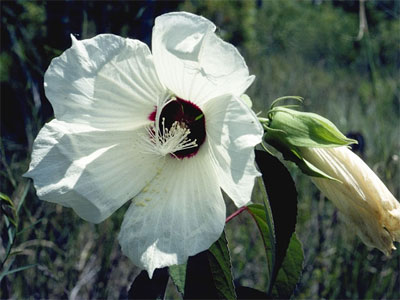
Wooly rose-mallow. Photo by Mrs. W. D. Bransford.
Cool Texas Plants for Hot Texas Summers
When it is too hot to even think, a number of native plants aren’t sweating it. Below you’ll find a list of reliable summer performers for your garden, most blooming from June through September. Kick back with a cool drink and enjoy these hardy Texas natives through the window of your comfy air-conditioned abode.
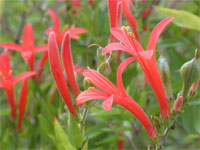
Flame acanthus.
Photo by Joe Marcus.
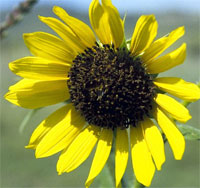
Common sunflower.
Photo by Robert C. Duncan.
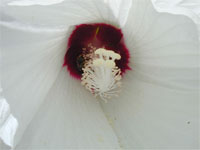
Wooly rose-mallow.
Photo by Joe Marcus.
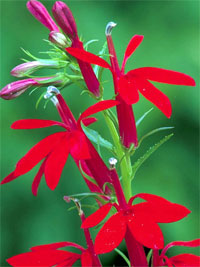
Cardinal flower.
Photographer unknown.
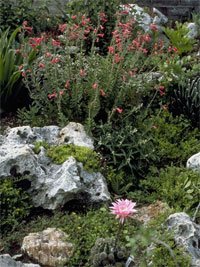
Rock penstemon.
Photo by Paul Cox.
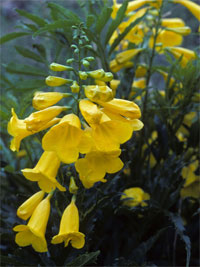
Yellow bells. Photo by Sally and Andy Wasowski.
Flame acanthus or hummingbird bush (Anisacanthus quadrifidus var. wrightii) — A shrubby hummingbird favorite with trumpet-shaped orange or red flowers. Don’t be surprised to see large butterflies nectaring alongside the hummers; there might even be a chase! Needs good drainage. Full to part sun.
Partridge pea (Chamaecrista fasiculata) — Golden pea-shaped blossoms and delicate lacey foliage adorn this fast-growing annual. Host plant for many sulphur butterflies. Sow seeds in spring for summer color. Full to part sun.
Datura or Jimson weed (Datura spp.) — Stunning 4-inch-wide funnels bloom in the evening, luring sphinx moths with their delectable fragrance. The foliage is toxic (and deer resistant), so avoid prolonged exposure to skin. Perennial. Full to part sun.
Coral bean (Erythrina herbacea) — Crimson tubes arranged in whorls along the flower stem invite hummingbirds. Beware of thorns, and give this deciduous shrub plenty of room to reach full glory. Full to part sun.
Sunflower (Helianthus annuus) — Easy and quick to grow from seed, sunflowers add a cheerful face to any sunny garden. Reseeding annual. Full to part sun.
Wooly rose-mallow (Hibiscus lasiocarpos) — There are many water-loving plants that give their best show in summer, including wooly rose-mallow with its large, 4-inch-wide, flaring blossoms. Likes average to moist or saturated soils; poor drainage is OK. Deciduous shrub. Full to part sun.
Cardinal flower (Lobelia cardinalis) — Rich, deep-red flowers bloom along spiky stalks, feeding hummingbirds and large butterflies. Typically found growing along stream sides, it prefers ample water. Poor drainage or saturated soil is fine. Reseeding annual or biennial. Full to part shade.
Turk’s cap (Malvaviscus arboreus var. drummondii) — One more fabulous hummingbird pit stop! Prolific scarlet flowers are modest and resist fully unfolding. Deciduous perennial or sub-shrub. Full to part shade.
Rock rose pavonia (Pavonia lasiopetala) — Another member of the hibiscus family, pavonia shows its hot-pink blush in full sun or medium shade. Needs good drainage. Deciduous shrub.
Rock or cutleaf penstemon (Penstemon baccharifolius) — Unusual coral-colored flowers appear on evergreen, almost succulent foliage. Aptly named, it can grow straight out of limestone. Trim back leggy stems to leafy rosettes later in the year. Very drought tolerant and needs good drainage. Evergreen sub-shrub. Full sun to light shade.
Yellow bells (Tecoma stans) — The name accurately describes the flowers, and the bright-green, feathery leaves are a nice contrast to other drought-tolerant shrubs like cenizo (Leucophyllum spp.) or grasses. Deciduous shrub. Full sun to light shade.
Wooly and Western ironweed (Vernonia lindheimeri and V. baldwinii) — Clusters of violet flowers and their butterfly allies adorn both species. Wooly ironweed stays smaller, has narrow, silvery leaves and is more drought resistant, whereas Western ironweed can get two to three times taller, has broader and greener foliage and prefers slightly wetter conditions. Where the ranges of these two overlap, you can get intermediate forms. Perennial. Full sun to light shade.
For more information about Texas native plants, including more great photos in our image gallery, visit the Wildflower Center’s website at: www.wildflower.org.
About the author: Andrea DeLong-Amaya is the director of horticulture at the Lady Bird Johnson Wildflower Center in Austin.

